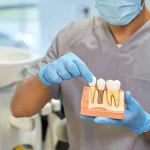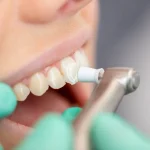Whether it’s for music, movies, or gaming, a good speaker is essential for an immersive audio experience. However, speakers can develop issues over time, leading to poor sound quality or even complete failure. Before you rush to buy a new set, consider trying some simple DIY solutions to fix your speaker cleaner. This guide will help you troubleshoot common problems, offering step-by-step solutions to restore clear sound.
Understanding Common Speaker Problems
Speakers can malfunction for various reasons, ranging from physical damage to electrical issues. Here are some common problems you may encounter:
- Distorted Sound: This issue often arises from a blown driver, inadequate power, or interference from other electronic devices.
- No Sound: This can result from faulty connections, broken wires, or issues with the audio source itself.
- Uneven Sound: If one speaker is louder than the other, it could be due to mismatched components or incorrect settings on your audio device.
- Buzzing or Humming: This typically indicates a grounding issue or interference from other electronics.
- Physical Damage: Visible damage to the speaker cone, grill, or housing can severely impact sound quality.
Basic Tools and Materials Needed
Before diving into repairs, gather a few essential tools and materials:
- Screwdriver set (flathead and Phillips)
- Soldering iron and solder
- Multimeter (for testing electrical components)
- Replacement parts (like speaker drivers or wires)
- Cleaning supplies (like isopropyl alcohol and a soft cloth)
- Duct tape or speaker glue (for minor repairs)
- A soft brush or compressed air (for dust removal)
Step 1: Inspect the Speaker
Start by examining your speaker visually. Look for any obvious signs of damage, such as:
- Cracks in the speaker cone: This can lead to distorted sound and should be repaired immediately.
- Loose connections: Ensure that all wires are securely connected to the speaker terminals.
- Damaged cables: Check for frays or breaks in the wiring that may hinder performance.
Quick Inspection Checklist:
- Is the power supply functioning?
- Are all wires connected securely?
- Are there any visible damages to the speaker components?
- Is the audio source working correctly?
Step 2: Cleaning the Speaker
Dust and debris can accumulate in and around your speakers, affecting sound quality. Cleaning your speakers can often restore clarity and enhance performance.
How to Clean Your Speaker:
- Unplug the Speaker: Safety first—make sure the speaker is disconnected from any power source.
- Remove Dust: Use a soft brush or compressed air to remove dust from the speaker grill and surrounding areas. Be careful not to push dust further into the speaker.
- Clean the Cone: Dampen a soft cloth with isopropyl alcohol and gently wipe the speaker cone. Avoid applying too much pressure, as this can cause damage.
- Let It Dry: Allow the speaker to dry completely before plugging it back in.
Step 3: Fixing Loose Connections
Loose connections are one of the most common reasons speakers fail. If you hear intermittent sound or no sound at all, follow these steps:
How to Secure Connections:
- Inspect the Terminals: Check the speaker terminals for any loose wires. Ensure that the positive (+) and negative (–) connections are correctly attached.
- Soldering Wires: If you find a broken wire, you may need to solder it back together. Here’s how:
- Strip the ends of the wire using wire strippers.
- Twist the exposed ends together and apply a small amount of solder.
- Allow it to cool before reattaching to the speaker.
- Check the Input Jack: If you’re using a wired speaker, inspect the input jack for any damage. If it’s loose or broken, you may need to replace it.

Baddiehub Style
Baddiehub is a social media platform and online community focused on showcasing and celebrating individuals who embrace confidence, style, and empowerment. It provides a space for users, often referred to as “baddies,” to share their unique looks, fashion sense, beauty tips, and lifestyle choices. The platform highlights bold self-expression and often includes influencers, models, and content creators who inspire followers with their confidence and aesthetics. With a strong emphasis on fashion and self-empowerment, Baddiehub has gained popularity as a space for people to express themselves and connect with others who share similar interests in beauty and style.
Step 4: Replacing Blown Drivers
A blown driver can cause distorted sound or complete failure. If you suspect this is the case, here’s how to replace it:
How to Replace a Speaker Driver:
- Identify the Problem: Test the speaker by playing audio at a moderate volume. If you hear distortion or no sound, it’s likely the driver is blown.
- Remove the Speaker from the Enclosure: Unscrew the speaker from its housing and gently lift it out.
- Disconnect the Old Driver: Carefully detach the wires connecting the driver to the speaker terminals.
- Install the New Driver: Connect the new driver to the speaker terminals, ensuring proper polarity (positive to positive, negative to negative). Secure it in place.
- Reassemble the Speaker: Put the speaker back into its housing, securing it with screws.
Step 5: Addressing Grounding Issues
If you notice a buzzing or humming sound, grounding issues might be the culprit. Follow these steps to resolve it:
How to Fix Grounding Issues:
- Reposition Your Speaker: Sometimes, moving the speaker away from other electronics can reduce interference.
- Use a Ground Loop Isolator: This device can help eliminate hum caused by grounding issues. Simply connect it between the audio source and the speaker.
- Check for Proper Grounding: Ensure that your electrical outlets are properly grounded. You can use a multimeter to test for ground faults.
Step 6: Adjusting Audio Settings
Sometimes, the issue may not be hardware-related but rather a settings problem. Check your audio settings to ensure everything is correctly configured:
- Balance Settings: Make sure the audio balance is centered. If one side is louder, adjust the settings accordingly.
- Equalizer Settings: If you’re using an equalizer, check for any extreme adjustments that could distort sound. Resetting to default settings may help.
- Update Audio Drivers: For computer speakers, ensure your audio drivers are up to date.
Step 7: Testing Your Speaker
After completing repairs, it’s time to test your speaker:
- Plug it Back In: Reconnect your speaker to the power source.
- Play Audio: Choose a song or sound that you’re familiar with and play it at a moderate volume.
- Listen for Improvements: Pay attention to clarity, volume, and any distortion. If the sound is improved, you’ve successfully fixed your speaker!
Conclusion
Fixing your speaker can often be a straightforward process with the right tools and knowledge. Whether it’s cleaning, securing connections, replacing components, or adjusting settings, these DIY solutions can save you money and restore your audio experience. Remember, regular maintenance is key to prolonging the life of your speakers. By being proactive, you can enjoy clear sound for years to come. If, however, you find yourself facing persistent issues or complex problems, it might be time to consult a professional.
Taking the time to troubleshoot and repair your speakers not only enhances your listening experience but also provides a sense of accomplishment. So, next time you encounter audio issues, remember these simple DIY solutions and say goodbye to poor sound quality.







